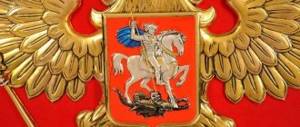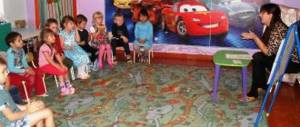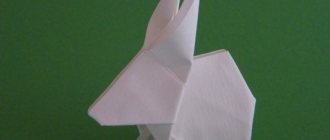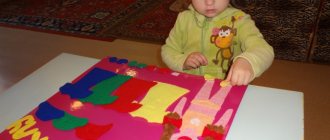“Putin is a national ***** (homosexual, disdainful - note from “Papers” ),” shouted a passing punk, rhyming Nod’s slogan.
- Get out of here, provocateur. Well, look at him,” the activists responded.
The punk didn't want to leave. In response, he just started singing the Noize MC song “From the Window” and shaking his shaggy head right in front of the portrait of Putin.
Other passers-by reacted to us more calmly. Intelligent-looking St. Petersburgers came up and tried to shame us - in response, we called them white ribbon people. Every hour, at least three tourists from Europe and China took selfies in front of us. Sometimes the police came up and took pictures of us - we interacted with them extremely politely, and after they left we discussed that they probably supported the NOD in their hearts.
At the same time, only pensioners and children took our newspapers. Most of the several thousand people who passed us along Nevsky Prospekt during the two hours of the action simply did not pay attention to the colorful gang of Nodovites. Almost each of us held a huge flag with a St. George ribbon and a poster about the American oppressors, and it seemed that there were at least fifty of us at the rally.
In fact, most often three to six people came to the pickets, and on the most successful days - no more than 15-20 activists, who, apparently, make up the entire NOD activist in St. Petersburg. Almost half of them are pensioners with plenty of free time and nostalgia for the USSR. Also attending the protest were several very modestly dressed St. Petersburg residents over 40 and a couple of patriotic students.
There were several more semi-mythical characters like “Tolyan” - a 40-year-old man who, even at +3, walks around St. Petersburg in shorts, and the famous gay activist Timur Bulatov, who blames Pavel Durov and LGBT activists for the St. Petersburg terrorist attack. However, during the month of my participation in NOD at the rallies, we never crossed paths with them.
Despite the external effect, from the inside the movement's shares look extremely boring. In terms of atmosphere, they are most reminiscent of pensioners’ gatherings at their dacha. They don’t discuss politics here; more often than not they just remain silent. And if they talk, it’s about back pain and their grandchildren’s success at school.
“You know, I have a niece living in Amsterdam, another relative in The Hague, others in the USA,” the failed sailor Vladimir told me at one of the Sunday rallies.
— Yes, you already told us at the last event.
“My niece moved there more than 20 years ago and works as the chief programmer in the office,” he continued.
- And how are they doing there, abroad? They don’t want to come back to fight for Russia with you?
- No, they like it there. It's good there.
What Nodists believe in
The first NOD activists appeared on Russian streets in the fall of 2012, shortly after the Bolotnaya case. The ideology of the movement, which was created by State Duma deputy Evgeny Fedorov, can be briefly described in one phrase: the United States is to blame for all of Russia’s troubles.
It is America that raises tariffs and introduces new taxes, controls the media and forces the State Duma to pass laws unfavorable to Russians, and also takes schoolchildren to rallies. Moreover, the NOD believes that Maidan in Ukraine and the conflict in Donbass are a consequence of a virtually open war waged by the United States against Russia. The terrorist attack in the St. Petersburg metro is one of the manifestations of this war, we are confident in the movement. According to activists, American intelligence agencies participated in its preparation.
The NOD fits absolutely all of Russia’s problems into the theory of all-powerful enemies from America and never deviates from the official line of the state. Protesting truck drivers are declared hidden Ukrainian terrorists, students who took part in the protests are declared to be Satanists, and corrupt officials are declared to be US agents. Moreover, following the Kremlin’s statements, Syria is becoming the country’s main front for the NLM, and Trump is turning from a hero of Russia into a traitor.
In their opinion, the broad powers of Americans are enshrined in laws: after the collapse of the USSR, Russia adopted the Constitution written by “Western advisers” and became a US colony. They rule the country with the help of a large “fifth column”, the Central Bank, the media and oppositionists like Alexei Navalny.
Only a small number of Russians resist the occupation, and the main fighter against the Americans is Vladimir Putin, says Nod mythology. During his 16 years in power, he has done a lot, but he simply physically cannot liberate Russia completely. “The Americans will immediately throw him off. And the State Duma, in which the “fifth column” is entrenched, will not allow this to be done,” Nodovites explain in their propaganda materials, calling Putin a world revolutionary.
The NOD sees only one way out of the situation - to hold a referendum on amending the Constitution and striking out the clauses on the primacy of international law and the absence of ideology. And also give Putin emergency powers. For example, introduce criminal penalties for officials who, at the will of the Americans, do not comply with Putin’s decrees.
At the same time, after the election of Trump, the conflict with the United States only intensified, the NOD is sure. Moreover, activists recently claimed that they had at the last moment prevented a “coup in the wake of Trumpmania” in Russia. The main character in the conspiracy was to be Dmitry Kiselev.
Who invented GCD
The NOD and its confused ideology were created by Evgeny Fedorov, a State Duma deputy with the appearance of a school computer science teacher.
Evgeny Fedorov
The future United Russia member was born and raised in Leningrad, served in Afghanistan and Baikonur, and entered politics in 1989 at the age of 26. Since then, Fedorov has been a deputy of five convocations of the Duma and has held several government positions. Among other things, he was Deputy Minister for Atomic Energy.
According to Fedorov, he always understood that Russia was controlled by the Americans. “Yes, the State Duma only adopts laws written in the West. But this fact did not stop me from working. How did this fact not prevent me from getting up and shaving in the morning,” Fedorov himself explained.
At the same time, the deputy became famous not for his many years of service, but for his failure in the debate with Navalny, during which the phrase “Party of Crooks and Thieves” was first heard, for the creation of the National Democratic Movement, and for the fact that he was the initiator of several high-profile bills at once. Among them are the Dima Yakovlev law, the law on foreign agents, the ban on “homosexual propaganda” and so on. Fedorov considers all these laws to be the results of his work behind enemy lines and the first steps towards liberating Russia from the “American yoke.”
At the same time, the deputy, in principle, attributes most of the changes in Russian reality to himself and his movement. Thus, according to the leader of the NOD, activists prevented several conspiracies and revolutions in Russia, overcame the “fifth column” and even participated in media scandals. For example, we achieved a change in the leadership of RBC.
Apart from Fedorov and his faithful assistant Maria Katasonova, who constantly appears in the media, the NOD has practically no bright leaders. However, the movement still has some semblance of a vertical of power.
On paper, the NOD has an “ideological committee,” a legal service responsible for collecting humanitarian aid and working with entrepreneurs, a newspaper, and even its own, but inactive, “National Course” party. However, according to the Nod members themselves, the committees meet once every few months and the entire movement rests on ordinary activists.
Abstract of the NOD “National Flag of Russia”. lesson plan (preparatory group) on the topic
Synopsis of the educational activity “National Flag of Russia”.
for children of a general developmental group from 6 to 7 years old
Educator: E.Yu. Nasedkina
Website materials used: https://ds82.ru/doshkolnik/856-.html
Program content.
- Summarize children's knowledge about the National Flag.
- Introduce the meaning of the colors depicted on the flag.
- To arouse in children a feeling of pride and admiration for the beauty of the National Flag. Create a desire to make small flags with state symbols yourself.
- Strengthen the ability to work with scissors; ability to work according to templates (outline, cut along the contour); Carefully paste the image in a certain sequence.
- To instill in children respect for the power of the Russian state, love for the Motherland, and a sense of pride in their country.
Material. Image of the National Flag. Rectangular blanks for flags (from whatman paper) 10 by 20 cm; colored paper; stripe patterns. Scissors, glue, glue brushes, napkins, flag sticks (pole) with slots for the flag, etc.
MOVE GCD
Guys, in the last lesson we got acquainted with the main symbols of Russia.
– What symbols of Russia do you remember?
– I gave you an interesting task. Who will remind you what I asked you to know?
If children find it difficult, point to an easel with a picture of a flag.
– Tell us about the National Flag and its colors?
(Children's answers) White is the color of purity of intentions, peacefulness and wisdom. Blue is the color of the sky, water, sea - a symbol of freedom. Red is the color of courage, strength, power and life.
The teacher reads an excerpt from E. Kuchbarskaya’s poem “Russian Flag”
Three colors of the Russian flag. Every color is a sign for all of us.
There is a red color on the flag, It is warmed by heroism. Perseverance, sacrifice, courage - the meaning of this color of the flag.
The blue color on the flag is fidelity, firmness of spirit, immutability, kindness, simple-heartedness, which people have valued forever.
White is purity, nobility, height. Bright Angels Hello Means white color.
— I have the following question for you:
– Where did you see the National Flag in our city?
The flag flies over the Administration of our city. On special days and public holidays, the Russian flag is hung on public buildings, schools, and kindergartens. – Where else can you see the National Flag?
The national flag can be seen on the Kremlin in Moscow, the President's car, warships and aircraft of the Russian army, and spacecraft. Our athletes perform under the Russian flag at all sports competitions and Olympics. They are met in the stands by fans and greeted with Russian flags. Sports competitions will soon be held in our kindergarten. You and I will definitely go watch them and become active fans. And to support young athletes, we will make small pieces of the Russian flag - flags. We will use them to greet the athletes and cheer for them. Do you agree? Go behind the workstations. In our work we will use a blank (a base made of thick Whatman paper), templates, and colored paper.
– What color paper do we need? Choose the colors you need and place them in front of you. Ready? From them you need to cut three stripes according to this template
Trace and cut out. Demonstration of the production of one strip.
All strips are made in this way.
– In what order will we stick the stripes? If you find it difficult, turn to reproduction.
After you have pasted all the stripes, you need to turn the work over and stick the next three stripes on the back side in the same sequence. Once dry, insert the finished flags into the slots. Let's get to work.
In the course of independent work, providing assistance to children who have difficulty, praising children for correct execution, accuracy in work, and speed of execution.
Bottom line.
Thank the children. It should be noted that with such flags you can go not only to sporting events, but also to city holidays, to demonstrations, proudly raising the symbol of Russia. Offer to raise the finished flags above their heads and wave them to the accompaniment of solemn music.
Who is a member of the NOD
Every weekday, master of sports in mixed martial arts Vasily Veselov gets up at 6 am and goes to work at a metallurgical plant. However, he considers the main task in life not this at all, but the organization of patriotic actions. This is part of his duties as deputy chief of staff of the NOD for Novosibirsk.
Veselov joined the NOD after the Ukrainian Maidan in order to prevent its repetition in Russia. “It is important for us to reduce the degree of protest sentiment in the city. Modern Russia is not independent, says Veselov. — We pay tribute with money, children, scientists, resources. Our media works to destroy the people. We have a 50% divorce rate, most children have mental disorders, teenagers do not respect their elders. In general, a complete degradation of culture. That’s why I’m in the NOD.”
NOD headquarters are now operating in all more or less large cities of Russia: activists go to rallies in Moscow and Novosibirsk, picket the US Consulate in St. Petersburg and come to bet on opposition rallies in Barnaul.
Sometimes such disputes escalate into clashes. Over the past year alone, the media have written about NOD attacks on Alexei Navalny, Lyudmila Ulitskaya, St. Petersburg photographer David Frenkel, and even schoolchildren. The Nodovites themselves reject all accusations, declaring that the attackers were not Nodovites. Moreover, they emphasize that they are fighting to change Russia exclusively through legal methods.
In total, there are already more than 200 NOD headquarters in Russia. The total number of activists, according to the leaders of the movement, exceeds 160 thousand. At the same time, Fedorov himself and his supporters are confident that in fact there are even more Nodovites. For example, they consider Vladimir Putin as their ally - they call him the true leader of the movement - and the majority of the security forces.
At first glance, it seems that NOD unites a variety of people. We interviewed activists from eight regions of Russia and found out that the movement includes a 24-year-old baker from Nizhny Novgorod, a 28-year-old artist whose sculpture of a gazelle adorns one of the train stations in the Krasnoyarsk Territory, and a 37-year-old hunter from Voronezh. Among the supporters of the movement are hipsters from Moscow, who sometimes receive minor positions in the State Duma thanks to Fedorov, and lonely pensioners from Vladivostok. They all consider themselves revolutionaries and “bearers of truth” who must defeat the United States.
At the same time, becoming an activist and joining the ranks of NOD is very simple. To do this, just fill out a form on the website or just come to one of the many promotions. For example, in St. Petersburg, four to five NOD pickets take place a week.
However, the new activist cannot count on any big accomplishments. All NOD activity is limited to almost daily actions for 3–15 people with slogans like “Motherland! Freedom! Putin! and “Our country - our rules,” as well as a heated discussion of the latest political news on social networks.
The official group of the movement has more than 10 thousand subscribers, Yevgeny Fedorov has about 80. On these pages, activists praise Stalin and discuss conspiracies of the “world behind the scenes”, curse “Navalny’s militants” and the collapse of the USSR, argue whether Putin has clones or whether he manages to do everything without them, and also often complain that their relatives, at best, do not share the passion for GCD at all, and at worst, they are considered crazy fans of conspiracy theories.
Each headquarters has its own pages with a much smaller number of subscribers. At the same time, the number of GCD cells in the city is not limited and to open your own, you just need to find three like-minded people. For example, in St. Petersburg there are two NOD headquarters. The most numerous of them is led by 46-year-old entrepreneur Alexey Stepanov.
Get sets of video lessons
They know nothing about each other, but in 8 hours each of them will die, poisoned by an unknown poison. The only chance to get the antidote is to complete all tasks and beat the mysterious puppeteer.
Drawing the Russian flag is quite easy. Since the flag panel is a rectangle, all that remains is to draw this rectangle and divide it into three lines. Then add another line to the rectangle, like a stick on which the flag is attached. We color the tricolor: the top part is white, the middle part is blue, the bottom part is red.
Later, coats of arms began to be invented not only by warriors, but also by families, and then by cities and countries. They tried to depict something very important for the family, city, and country on the coat of arms. Let's take a closer look at the coats of arms you see. If the coat of arms depicts a fish, what could it mean? (Children's answers.) Yes, this meant that the people in this country or city are engaged in fishing.
Motherland! Everyone knows this word from childhood. Homeland is the place where you were born, where you live with your parents, with your friends.
Since the knights wore the same clothes, during such tournaments it was difficult to know where their friends were and where their opponents were. And then the knights began to attach various signs to their helmets to recognize their own - plumes, ribbons, and then they began to draw various designs on their helmets. This is how they distinguished their opponents during tournaments.
Song about Russia. CLIP of the song. Beautiful video congratulations on Russia Day. — 2 minutes, 56 seconds — Go to channel — Irina Panina.
On this day in 1990, the first Congress of People's Deputies of the RSFSR adopted the Declaration of State Sovereignty of Russia, which proclaimed the primacy of the Constitution of Russia and its laws.
License for the right to conduct educational activities No. 5251 dated August 25, 2017.
Children: Russians Educator: People of different nationalities live in Russia - Russians, Chuvashs, Tatars, Bashkirs, Yakuts. All of them and we are Russians, we are citizens of Russia. This unites us.
Educator: every person has an Earth on which he lives, there is a Mother who gave him life, loves him, pities him; a person needs bread, water - it is impossible to live without this, but among the most necessary things a person has a homeland! Our Motherland is Russia!
Our flag flies in the capital of the Motherland - the city of Moscow, where the main man of the country, our president, works! What's his name?
The golden double-headed eagle is a symbol of the eternity of Russia, a symbol of the preservation of the Orthodox faith among the Russian people.
Educator: -That's right. First, you will take red plasticine, roll it into a sausage, stick it on the bottom strip of the base and smear it along the strip without going beyond the outline. Then take blue plasticine and do the same with it on the middle strip, and then cover the top strip with white plasticine.
It is very easy to draw the Russian flag; even novice artists can cope with this task. First, on a landscape sheet of paper, draw a rectangle of arbitrary dimensions or approximately 10 by 15. Now we divide our rectangle into three parts and draw a flagpole on the left. Then we begin to color the Russian flag. There is no need to touch the top part, it should be white.
In order to draw the Russian flag with a pencil step by step, we first need to draw a 10x15 cm rectangle.
During work, the teacher involves children in artistic activities, includes children in independent activities, provides time for creative activity, provides a choice of materials, and observes children while doing work. If a difficulty arises, it helps. Ensures proper seating at the table.
Viewers will be treated to a documentary immersion into the reality of the work. Lines that were shortened or cut from the film due to timing were expanded in the series.
Systematize children's knowledge about the small Motherland, about the state symbols of the city of Sevastopol. Introduce children to the image of the coat of arms of the city of Sevastopol, the meaning of the symbols and images in it, and its color scheme. Teach children to combine several drawing techniques.
Wherever you are, you will always remember your native land, your Siberia! The land where we were born is called our small Motherland. People of different nationalities live in Russia, but they all have one thing in common - We are Russians. We live in a great country! And we were all born in the same country, we are all of the same Russian family.
The flag is a sign of power. Many years ago, instead of a flag, they used a pole and tied a bunch of grass and a horse's tail to it. Troops were drawn to this flag, and therefore this flag was called a banner. Then they began to make banners from red fabric. And after that our tricolor Russian flag appeared.
We finished our work. Now we will see whose work is the most beautiful. Who came to visit us today?
Guys, we said hello and got ready to get to work. Let's start. When I went to your class, I found someone’s book. Let's guess who lost it.
Who leads the ordinary Nodovites
The head of the St. Petersburg headquarters does not at all look like an ordinary Nodovite. He owns several bookstores, quotes the philosopher John Locke from memory, and compares his life path with the fate of Dostoevsky.
Alexey Stepanov was born in Perm into a mining family. As a child, he was a pioneer and Komsomol member, and even then he was interested in politics. “In the 10th grade, I led a political information club at school: on the radio once a week I exposed capitalism and the American bourgeoisie,” he explains.
After school, Alexey planned to continue the family business and came to St. Petersburg to enroll in the Mining Institute to major in engineering. But the USSR collapsed and engineers became in little demand. Instead of the mine, Stepanov chose books that he had adored since childhood.
— In the 90s, I got into the book business, but still as a simple buyer. I sent books to friends and relatives from other cities, received my $500 a month for this, rented a one-room apartment and lived in peace. That’s how I found myself through entrepreneurship,” he explains.
In the 2000s, economic growth began in Russia and the family of the future Nodovite could afford more and more every year: travel to Thailand and Switzerland, a car, an apartment. Stepanov explains these benefits, as well as the overall development of the country, solely by the role of Vladimir Putin.






